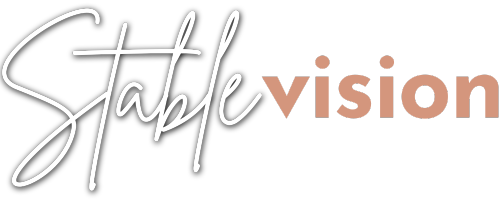From Saddles to Startups: Building a Stronger, Smarter U.S. Equestrian Industry
The U.S. equestrian industry is no stranger to grit, tradition, and resilience. But in today’s shifting economic and cultural climate, thriving means more than holding the reins - it means steering toward innovation, inclusivity, and smart business growth. The opportunities are there and we face them everyday. The question is: Will we have the vision and the support to seize them?
Diversifying How We Ride and How We Earn
The industry can no longer rely on a one-size-fits-all model. Forward-thinking barns and riding schools are embracing:
Flexible program models like group lessons, horse-sharing, and partial-leasing to lower cost barriers.
Tiered memberships and service packages that serve everyone from entry-level riders to premium clientele.
Partnerships with schools and nonprofits to create youth, therapeutic, and community programs that build lifelong engagement.
These shifts broaden our participant base while making the sport more approachable for newcomers.
The Missing Ingredient: Business Mentors & Investors
For all the passion and skill in the equestrian world, too many brilliant entrepreneurs are riding without a map—or a backer. That’s where mentors and investors come in.
Business mentors bring the wisdom of experience, helping equestrian entrepreneurs navigate pricing models, operational efficiency, and branding with the same precision they’d use to guide a green horse through its first course. They help bridge the gap between horsemanship and business acumen.
Investors, whether from within the equestrian community or from allied industries, can provide the capital needed for:
Facility upgrades and technology adoption
New revenue streams like event hosting or online programs
Marketing campaigns to attract fresh demographics
With structured mentorship and targeted investment, the equestrian sector can evolve from passion-driven to profit-sustainable without losing its soul.
Strengthening Our Financial and Operational Stability
The PDF highlights smart, resilient practices that every facility and entrepreneur can adopt:
Inclusive financial tools like microloans and cost-sharing models to buffer against economic shocks.
Operational efficiency through barn management software, automated billing, and flexible staffing.
Revenue diversification—not just more lessons, but clinics, competitions, and even non-horse community events.
These strategies keep barns financially healthy while freeing owners to focus on growth instead of constant crisis management.
Investing in People, Not Just Infrastructure
A thriving industry needs a skilled, motivated workforce. That means:
Apprenticeships and vocational training programs for the next generation of equine professionals.
Flexible employment models to attract and retain diverse talent.
Career pathways that make equestrian work a sustainable, respected choice.
Mentors can accelerate this by providing guidance, networking opportunities, and exposure to the business side of the sport. Investors can fund scholarships, training programs, and recruitment initiatives.
Harnessing Technology and Sustainability for Growth
From digital lesson booking to wearable horse health trackers, technology is transforming how we run barns, care for horses, and connect with clients. Adopting eco-friendly practices—from renewable energy to welfare monitoring—also boosts our appeal to environmentally conscious participants and funders.
Forward-thinking investors increasingly look for industries that blend tradition with innovation. The equestrian world can meet that standard.
Equity, Access, and the Future We Want
Sliding scale fees, scholarships, and targeted outreach are not just feel-good initiatives—they’re growth strategies. By expanding access to underrepresented groups, we create a richer, more diverse community and secure the industry’s long-term vitality.
But lasting change requires collaboration:
Entrepreneurs seeking mentors who understand both horses and business.
Governing bodies willing to partner with private investors.
Investors who see the industry’s $177B economic footprint and its untapped potential.
The Challenge
We stand at a pivotal moment. The equestrian industry has the tools, ideas, and talent to thrive—but without intentional mentorship, targeted investment, and a commitment to inclusivity, we risk letting opportunity pass us by.
The question is not whether the next wave of growth will come—it’s whether we’ll be ready to ride it.

